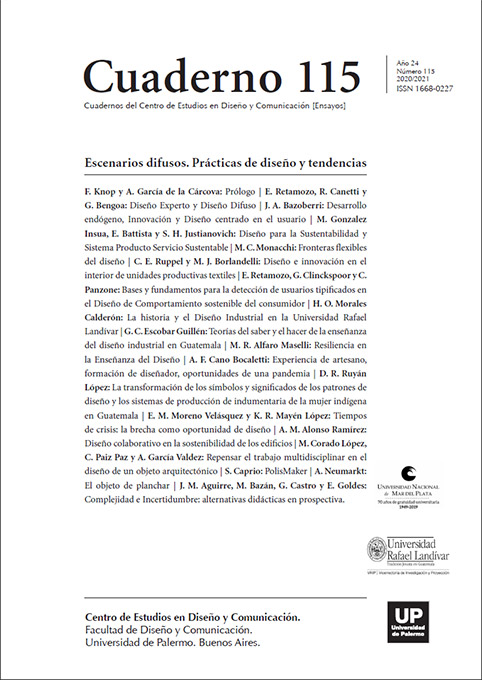Diseño colaborativo en la sostenibilidad de los edificios. Una mirada holística a la creciente arquitectura ecológica en tiempos de pandemia COVID-19
Abstract
Actions worldwide to find ecological sustainability in the development of human activities have increased exponentially. The growing changes have promoted actions for collaborative design, forming a multidisciplinary team that guarantees environmentally responsible and economically viable decision-making in the creation and maintenance of the built environments. This growing ecological architecture is booming from the globalization of methodologies, standards and certification systems, increasing the added value of designs worldwide. The new user sees a harmony in design, materials and space, now he hopes to generate a positive impact on the environment and guarantee his well-being and health.
References
ANSI & ASHRAE. (2016). Ventilation for Acceptable Indoor Air Quality. Atlatnta: ASHRAE.
García, A. (11 de mayo 2020). Guayaquil registra temperaturas por encima de lo normal para mayo, en la transición de la etapa lluviosa a seca. El Comercio. Recuperado de: https://www.elcomercio.com/actualidad/guayaquil-temperaturas-transicion-etapa-lluviosa.html
Millán, A. (2 de abril de 2020). Coronavirus: ¿por qué Ecuador tiene el mayor número de contagios y muertos per cápita de covid-19 en Sudamérica?. BBC NEWS MUNDO. Recuperado de: https://www.bbc.com/mundo/noticias-america-latina-52036460
Pesantes, K. (4 de abril de 2020). Hacinamiento y pobreza dificultan la cuarentena en Guayaquil. PRIMICIAS. Recuperado de: https://www.primicias.ec/noticias/sociedad/guayaquil-hacinamiento-pobreza-cuarentena/
UNESCO, (2020). The United Nations World Water Development Report 2020. Water and climate change. Paris: United Nations Educational, Scientific and Cultural Organization.
U.S. Department of Housing and Urban Development. (2003). The Practice of Low Impact Development. Maryland: HUD.
U.S. Environmental Protection Agency. (2001). Healthy Buildings, Healthy people: a vision for the 21st. Century. Washington DC: EPA.
U.S. Environmental Protection Agency. (2008). Reducing urban heat islands: Compendium of strategies. Washington DC: EPA.
U.S. Environmental Protection Agency. (2010). Our Nation’s Air, Status and trends through 2008. Carolina del Norte: EPA.
U.S. Energy Information Administration. (2019). International Energy Outlook 2019 with projections to 2050. Washington DC: EIA.
USGBC, (2013). LEED Reference Guide for Building Operations and Maintenance. Washington DC: U.S. Green Building Council.
Wolkoff, P. (1995). Volatile Organic Compounds Sources, Measurements, Emissions, and the Impact on Indoor Air Quality. En Official Journal of the International Society of Indoor Air Quality and Climate: Copenhagen, Dinamarca.
World Green Building Council. (2019). Building a better future, Annual report 2018/19. Toronto: The World Green Building Council.
Los autores/as que publiquen en esta revista ceden los derechos de autor y de publicación a "Cuadernos del Centro de Estudios de Diseño y Comunicación", Aceptando el registro de su trabajo bajo una licencia de atribución de Creative Commons, que permite a terceros utilizar lo publicado siempre que de el crédito pertinente a los autores y a esta revista.


